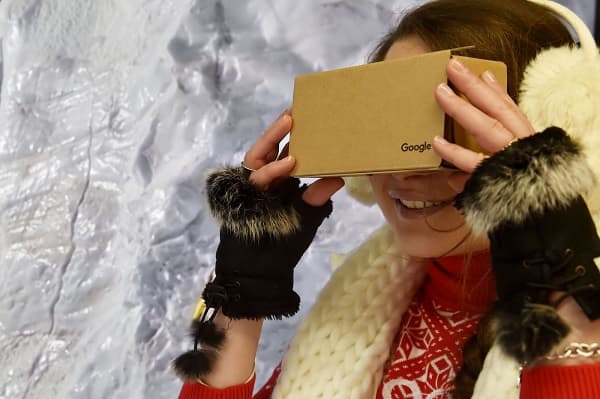Google's New VR Headset Is On The Cards, Launch Expected Later This Year
At the Google I/O developers meet in 2014, we witnessed the launch of a benchmark platform that has tasted sweet success in the Virtual Reality and Augmented Reality market, the <a href="https://www.crazyengineers.com/threads/google-cardboard-vr-sdk-is-here-turn-your-smartphone-into-a-vr-machine.77739">Google Cardboard VR SDK Is Here - Turn Your Smartphone Into A VR Machine</a>. Two years later, the same developers' conference might flip the switch on a brand new product that will offer much more than both its predecessors, and its Silicon Valley and other multinational rivals.
The VR reality market has come a long way ahead from it where started. Facebook acquired the VR company Oculus in March 2014 and has now been working on a head-mounted display for “immersive technology VRâ€, Oculus Rift, which might release anytime soon. Microsoft’s HoloLens is aimed at Augmented Reality, but is along these same lines. In a considerably bold move, Apple has decided to sell <a href="https://www.crazyengineers.com/threads/apple-is-selling-view-masters-vr-headset-through-its-own-website.86866">Apple Is Selling View-Master's VR Headset Through Its Own Website</a> on its own website. HTC’s Vive and Sony’s PlayStation VR might as well be released this very year.

But the actual competition Google wants to give is to <a href="https://www.crazyengineers.com/threads/samsung-gear-vr-powered-by-oculus-available-for-pre-orders-at-99.85335">Samsung Gear VR Powered By Oculus Available For Pre-Orders At $99</a> headset. The Gear might not have reached the level of a mainstream consumer device, but it most certainly comes in handy with a wide variety of games and applications. Added to that, Samsung has struck gold in its partnerships with Getty Images and Netflix, both of which use the Gear VR in their apps.
Google’s new headset would have better sensors, lenses and a more solid plastic casing than the Cardboard. It would work with a wide array of Android smartphones as opposed the Gear VR, which is currently compatible only with a handful of Samsung’s own smartphones.
Google will also look to channel VR into Android itself, rather than relying on third-party apps. This may solve the common problems Cardboard faces today, most common of them being the lag, which often renders a nauseated feeling to the user following a prolonged session. The VR software for Android would be a first attempt of its kind.
The developments aren’t surprising at all. Just last week, Google CEO Sundar Pichai signalled at the company’s long-growing interest in the VR arena, while also pointing to the success the Cardboard has enjoyed over time.
Source: #-Link-Snipped-#
The VR reality market has come a long way ahead from it where started. Facebook acquired the VR company Oculus in March 2014 and has now been working on a head-mounted display for “immersive technology VRâ€, Oculus Rift, which might release anytime soon. Microsoft’s HoloLens is aimed at Augmented Reality, but is along these same lines. In a considerably bold move, Apple has decided to sell <a href="https://www.crazyengineers.com/threads/apple-is-selling-view-masters-vr-headset-through-its-own-website.86866">Apple Is Selling View-Master's VR Headset Through Its Own Website</a> on its own website. HTC’s Vive and Sony’s PlayStation VR might as well be released this very year.

But the actual competition Google wants to give is to <a href="https://www.crazyengineers.com/threads/samsung-gear-vr-powered-by-oculus-available-for-pre-orders-at-99.85335">Samsung Gear VR Powered By Oculus Available For Pre-Orders At $99</a> headset. The Gear might not have reached the level of a mainstream consumer device, but it most certainly comes in handy with a wide variety of games and applications. Added to that, Samsung has struck gold in its partnerships with Getty Images and Netflix, both of which use the Gear VR in their apps.
Google’s new headset would have better sensors, lenses and a more solid plastic casing than the Cardboard. It would work with a wide array of Android smartphones as opposed the Gear VR, which is currently compatible only with a handful of Samsung’s own smartphones.
Google will also look to channel VR into Android itself, rather than relying on third-party apps. This may solve the common problems Cardboard faces today, most common of them being the lag, which often renders a nauseated feeling to the user following a prolonged session. The VR software for Android would be a first attempt of its kind.
The developments aren’t surprising at all. Just last week, Google CEO Sundar Pichai signalled at the company’s long-growing interest in the VR arena, while also pointing to the success the Cardboard has enjoyed over time.
Source: #-Link-Snipped-#
0
